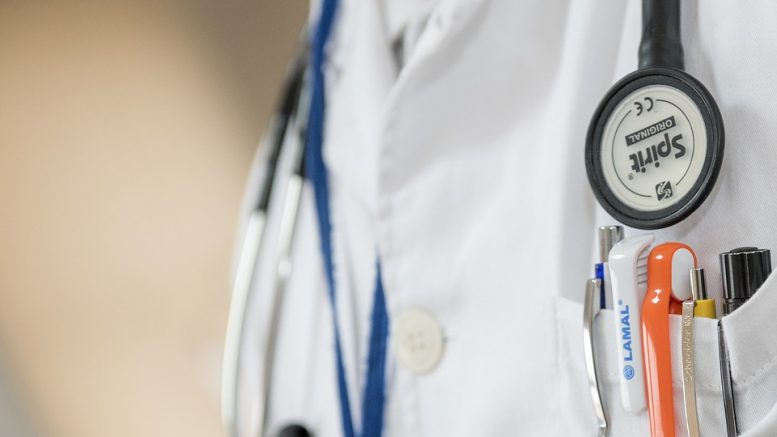In 2017, it was predicted that wearables would start moving away from wrist-based devices and into more specialized markets. One of the most significant sectors poised for this shift is healthcare. With advancements in wearable medical technology, the future of healthcare garments is full of potential. But what exactly is a “medical garment”?
What Defines a Medical Garment?
Medical garments refer to any wearable clothing or device designed to assist with health monitoring, diagnostics, or treatment. These garments can range from simple compression stockings to more advanced products, like smart belts or holsters that monitor vitals. While the exact definition may vary, these garments are primarily focused on improving healthcare by providing real-time data and supporting medical processes.
Some examples include:
- Compression garments (like stockings) that help with circulation.
- Cooling vests designed to manage body temperature.
- Smart belts or holsters equipped with biosensors to track vital signs or collect diagnostic data.
As wearable technology evolves, the potential for medical garments to impact healthcare grows exponentially. Thanks to innovations in medical-grade textiles (like antimicrobial or moisture wicking fabrics), these garments can offer even more benefits, making them an integral part of the healthcare ecosystem.
Consumer-Grade Wearables vs. Medical Garments: A Different Need
While devices like the Apple Watch are revolutionizing personal health monitoring, their capabilities are geared toward everyday health tracking. These wrist-worn devices, such as the Apple Watch, are excellent for monitoring:
- Heart rate and ECG (electrocardiogram) recordings
- Blood oxygen levels
- Sleep duration and potential disturbances
- Fall detection and more
These functions are great for users looking to maintain a healthy lifestyle, track fitness, and receive alerts for irregularities like atrial fibrillation (AFib) or low cardio fitness. However, chronic patients—those dealing with complex medical conditions like heart failure, feeding tubes, or undergoing dialysis—require a different level of care and monitoring.
For these individuals, medical garments are designed with their unique needs in mind. Unlike the general-purpose functionality of wrist-worn devices, medical garments aim to provide:
- More detailed and continuous monitoring of vital signs.
- Hands-free, non-invasive care for complex conditions.
- Enhanced comfort, flexibility, and discretion, ensuring patients can maintain dignity while receiving treatment.
The Role of Medical Garments in Chronic Care
As wearable medical garments become more accessible, they’re not just for fitness enthusiasts—they’re for patients who need continuous care. Imagine a patient wearing a garment that monitors heart rate, blood pressure, and oxygen levels all day, while also offering treatments like insulin delivery, dialysis, or other forms of medication in a hands-free manner.
Medical garments for chronic patients are designed to integrate seamlessly with the body, giving individuals the ability to go about their daily lives while receiving constant care. Whether it’s monitoring vital health data or delivering a treatment like pain management or fluid regulation, these garments offer solutions that are both functional and discreet.
Types of Medical Garments: From Vests to Holsters
While we’ve previously discussed medical vests and medical device holsters, there are many other types of garments designed to support various medical purposes. These garments are customized to meet the needs of specific medical devices and technologies.
- Medical Vests: These garments provide a comfortable and secure way to wear medical devices like monitors or sensors.
- Medical Organ Holsters: These holsters are designed to hold medical devices discreetly while providing easy access when needed.


The black arm support vest is designed to provide comfort and stability for individuals recovering from arm injuries. Featuring an integrated wrist cuff for added support, it helps reduce strain while promoting proper alignment during daily activities.
At Fieldtex, we specialize in designing and manufacturing custom medical garments tailored to specific devices. Whether it’s a specialized band, pouch, or holster, we ensure that the garment is comfortable and non-invasive, allowing the wearer to seamlessly incorporate the medical device into their daily life.
Challenges and Opportunities in Medical Garments
The medical garment industry holds infinite untapped potential. As new illnesses and treatments emerge, the need for new wearable medical solutions will grow. The challenge lies in designing garments that are not only functional but also comfortable and easy to wear for extended periods.
Key opportunities in the field include:
- Continuous Patient Monitoring: The integration of smart textiles into garments can help with continuous health monitoring, providing vital data in real-time.
- Hands-Free Treatment: Medical garments can also be designed to administer treatments hands-free, reducing the burden on healthcare professionals and making treatments easier for patients to tolerate.
As these garments evolve, the future of healthcare looks promising, with wearable devices playing a more significant role in treatment, diagnostics, and patient care.
Why Fieldtex is Your Partner in Medical Garment Manufacturing
With over 50 years of experience in custom sewing and contract manufacturing, Fieldtex has worked with numerous companies, helping them create prototypes and full manufacturing runs for medical garments and wearable devices. We offer specialized solutions tailored to the unique needs of our clients, ensuring that each garment is functional, comfortable, and aligned with the latest technology.
Looking Ahead: The Future of Medical Garments
The medical garment industry is on the brink of a revolution. As wearable technology continues to evolve, so too will the garments that support it. With innovations in smart textiles, real-time monitoring, and hands-free treatments, the future is full of promise for patients and healthcare providers alike. At Fieldtex, we’re excited to be at the forefront of this transformation, creating custom solutions that blend technology and comfort to improve patient care.
Do you have an idea for a Wearable Medical Garment? Start the development process today.

